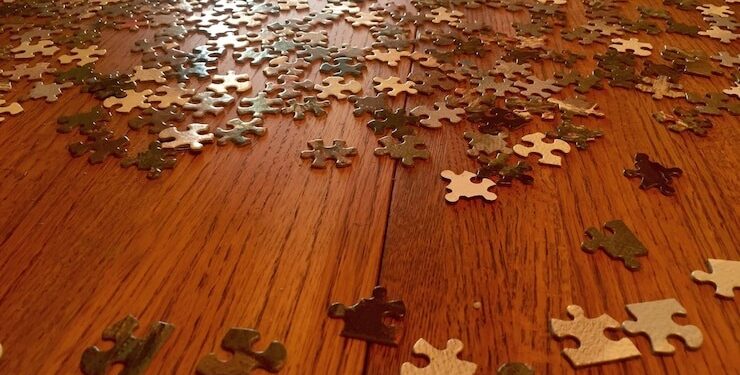There’s a big difference between a puzzle that’s just fine and one built to last. The growth in options available, especially online, means it’s now easier to find puzzles that suit different preferences, routines, and experience levels. But it also means the quality can vary a lot.
This guide focuses on what to look for if you’re looking for well-made puzzles with a few extra features that make solving them more enjoyable. That includes puzzles for adults who want a slower-paced, screen-free activity with some challenge.
Materials Make A Difference
Thin cardboard is still standard, especially in cheaper puzzles. It’s light and inexpensive to produce, but doesn’t hold up well after a few uses. Pieces may fray, warp, or start to split at the edges.
In contrast, quality puzzles tend to use a thicker board or laser-cut wood. These materials feel sturdier and last longer. Wooden pieces offer a more satisfying fit and a clean edge that doesn’t wear down quickly. You can tell the difference when you pick up the first few pieces.
If you’re buying puzzles for adults who enjoy solving them more than once, wooden or thick board construction is usually the better choice.
Look Closely At The Cut
Piece shape and precision are also key. In well-made puzzles, each piece has a precise, distinct fit. You don’t end up second-guessing whether a piece belongs. Lower-quality puzzles often reuse the same shapes repeatedly, which can be frustrating.
Laser-cut puzzles are a good indicator of higher quality. The pieces fit cleanly and consistently, improving the overall experience. Some premium designs also include unique silhouettes or unusually shaped pieces, such as animals or other objects or symbols. These small additions add a new dimension and make the process more interesting.
Choose A Design That Works Visually
A good image does more than look nice on the box; it should also help guide the process. Apparent color differences, strong contrast, and distinct areas in the image allow you to break the puzzle into smaller tasks.
Quality puzzles tend to feature artwork or patterns that stay visually engaging over time, which makes them ideal to return to over a few sessions. Avoid images that are made up of large areas of similar colors or textures. These can feel tedious and more frustrating than challenging, especially when the cuts aren’t sharp.
Consider Piece Count In Context
Larger puzzles aren’t always better. A 1,000-piece puzzle with a poor image or dull design can feel like a chore. On the other hand, a well-designed 500-piece puzzle can be very satisfying, especially for someone short on time or space.
Puzzles for adults often start at the 500-piece mark, with many popular options ranging between 750 and 1,000 pieces. The right size depends on how much time you plan to spend on it and whether you’re solving alone or with others.
Packaging And Extras
Small packaging details can say a lot about how a puzzle is made. Better-quality puzzles often come in sturdy boxes that hold up to repeated use. Some include cloth bags for storing the pieces, or printed art cards so you don’t have to prop up the box lid.
These additions aren’t essential, but they’re a sign that the makers are thinking about how the puzzle will be used (and reused). Packaging matters for people who buy multiple puzzles or work on them regularly. It protects the puzzle and helps keep everything organized between sessions.
The Appeal Of Slower Activities
Puzzles offer a simple but focused kind of engagement. You match shapes and colors and build something from parts.
Puzzles offer something tactile, quiet, and productive. They don’t require advanced skills; just time, attention, and a surface to work on. When a puzzle is well made, the process feels smoother. You don’t waste time trying to force pieces or have to deal with torn edges or peeling prints. The puzzle just works.
How To Spot Quality Before You Buy
If you’re browsing online, look for detailed product descriptions. Words like “laser-cut,” “wood,” or “thick board” are good signs. If no material is mentioned at all, you could be looking at a lower-quality product.
Check for real photos, not just renders or mockups. See if the box includes finish, storage, or image credits information. And if customer reviews mention blurry prints, loose fits, or damaged pieces, take note. These small details are essential when it comes to finding good-quality products.





















